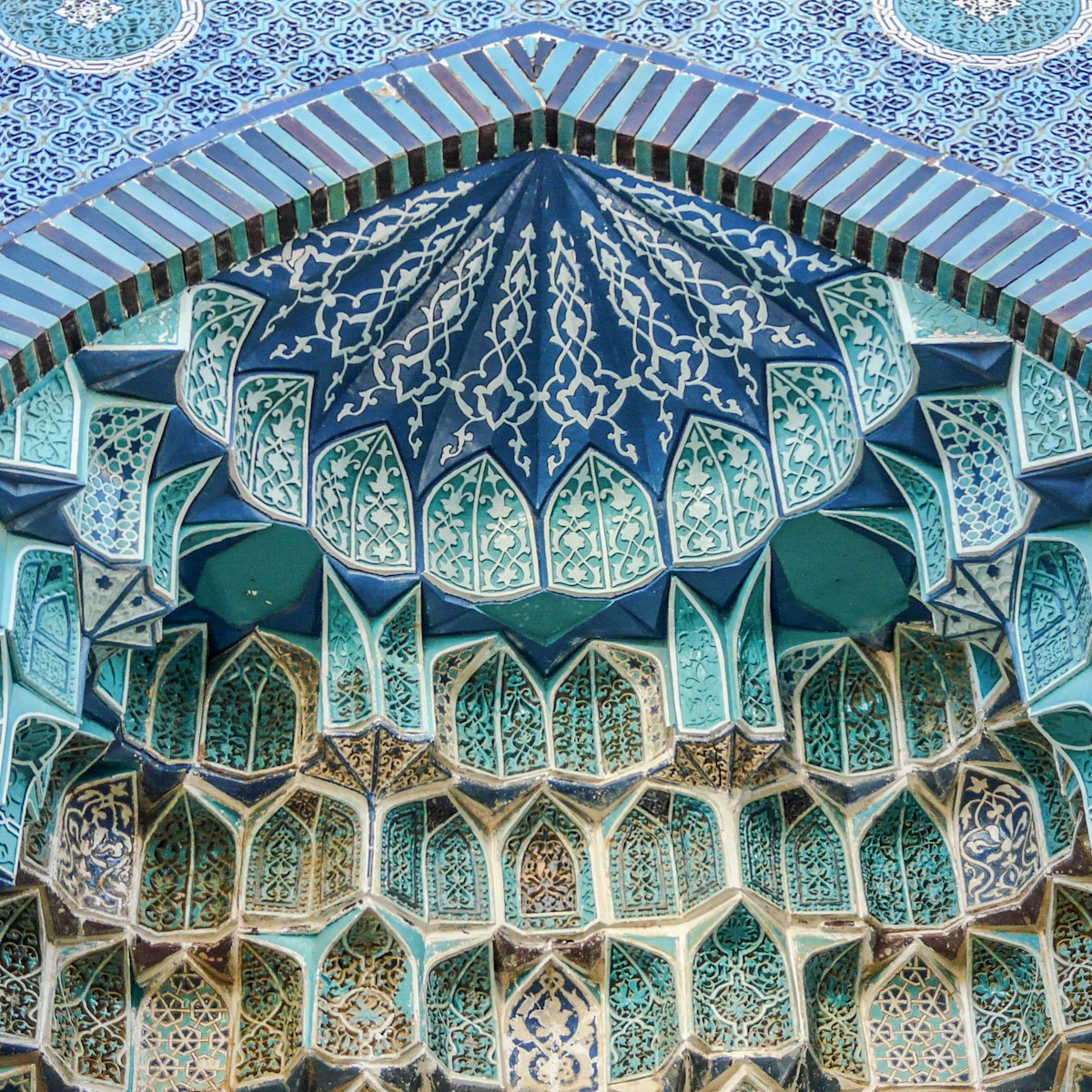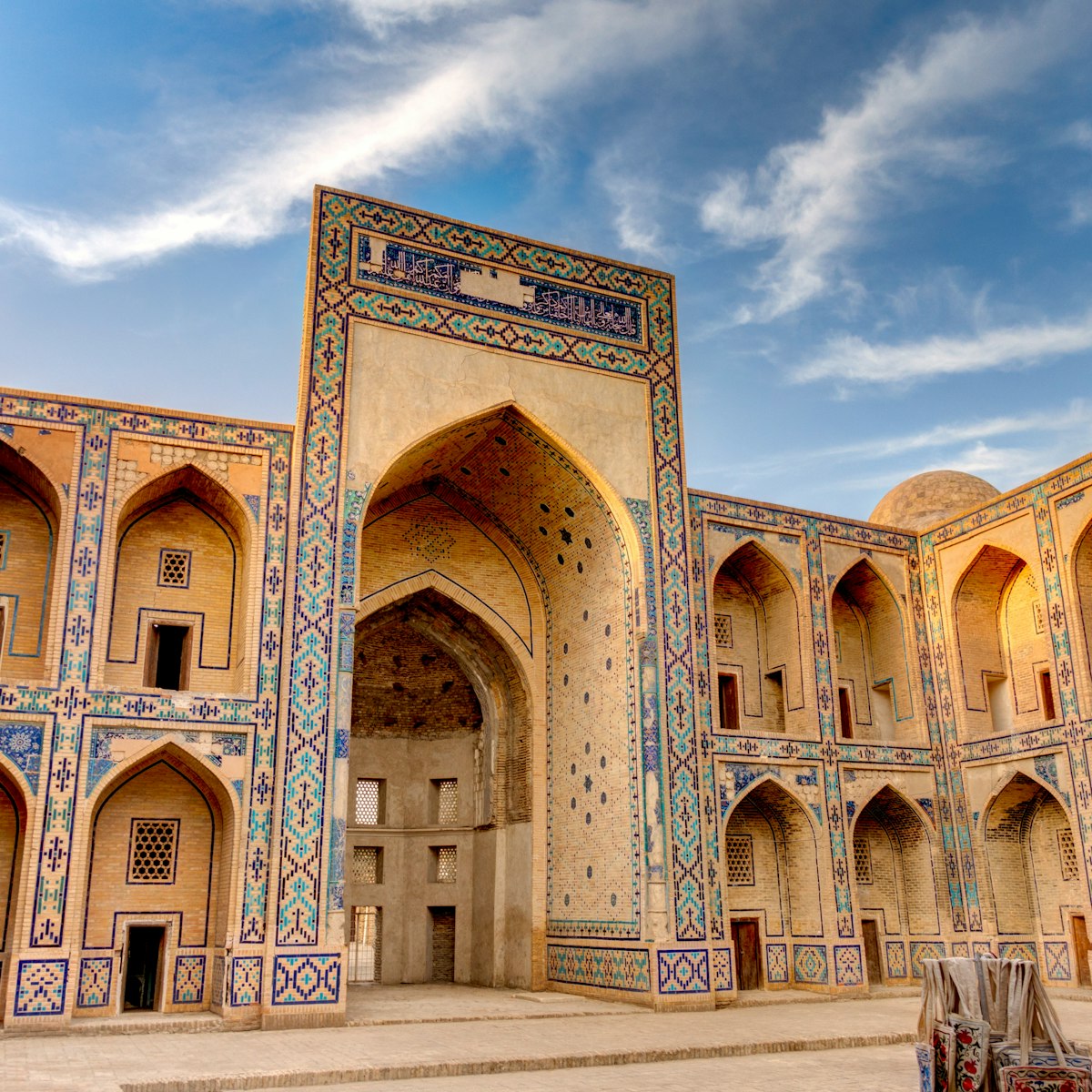This ensemble of majestic, tilting medressas – a near-overload of majolica, azure mosaics and vast, well-proportioned spaces – is the centrepiece of the city, and arguably the most awesome single sight in Central Asia. The three grand edifices here are among the world’s oldest preserved medressas, anything older having been destroyed by Chinggis Khan.
The Registan, which translates to ‘Sandy Place’ in Tajik, was medieval Samarkand’s commercial centre and the plaza was probably a wall-to-wall bazaar. The three medressas have taken their knocks over the years courtesy of the frequent earthquakes that buffet the region; that they are still standing is a testament to the incredible craftsmanship of their builders. The Soviets, to their credit, worked feverishly to restore these beleaguered treasures, but they also took some questionable liberties, such as the capricious addition of a blue outer dome to the Tilla-Kari Medressa. For an idea of just how ruined the medressas were at the start of the 20th century, check out the excellent photo exhibit inside the Tilla-Kari Medressa.
The Ulugbek Medressa, on the western side, is the original medressa, finished in 1420 under Ulugbek who is said to have taught mathematics here (other subjects taught here included theology, astronomy and philosophy). The stars on the portal reflect Ulugbek's love of astronomy. Beneath the little corner domes were lecture halls, now housing displays on Ulugbek, including copies of the 'Zij' (his writings on astronomy) and miniatures depicting Central Asian astronomers at work. At the rear is a large mosque with a beautiful blue painted interior and an austere teaching room to one side. Police guards occasionally offer to clandestinely escort visitors to the top of the medressa's minaret for around US$10.
The other buildings are rough imitations by the Shaybanid Emir Yalangtush. The entrance portal of the Sher Dor (Lion) Medressa, opposite Ulugbek’s and finished in 1636, is decorated with roaring felines that look like tigers but are meant to be lions. The lions, the deer they are chasing and the Mongolian-faced, Zorostrian-inspired suns rising from their backs are all unusual, flouting Islamic prohibitions against the depiction of live animals. It took 17 years to build but hasn’t held up as well as the Ulugbek Medressa, built in just three years.
In between them is the Tilla-Kari (Gold-Covered) Medressa, completed in 1660, with a pleasant, gardenlike courtyard. The highlight here is the mosque, which is on the left-hand side of the courtyard and is intricately decorated with blue and gold to symbolise Samarkand’s wealth. The mosque’s delicate ceiling, oozing gold leaf, is flat but its tapered design makes it look domed from the inside. The result is magnificent. Inside the mosque is an interesting picture gallery featuring blown-up B&W photos of old Samarkand. Several shops sell prints of these old photos.
Most of the medressas’ former dormitory rooms are now art and souvenir shops. Be sure to visit the Registan in the evening to see if the impressive sound and light show is being projected. If a large group has paid for the show then other visitors can watch for free.
Note that your entrance ticket is valid all day long, allowing you to come back and photograph the complex at the various times of day needed for the sunlight to be coming from the right direction. However, tell the complex security guards if you'd like to do this, otherwise they will tear your ticket and you won't be able to reuse it.






